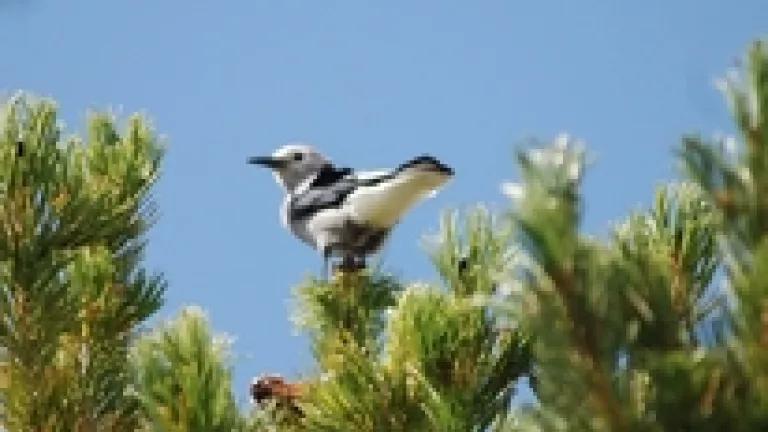
In response to a petition that we filed in 2008, the Fish and Wildlife Service is announcing that whitebark pine – a widespread, high-elevation tree species – warrants protection under the Endangered Species Act. This finding is significant as it is the first time that a wide ranging tree species has been found to be ‘imminently’ in danger of extinction throughout its entire range due to climate change. The tree will not yet receive the full protections of the Act because the Service states that they are precluded from protecting it due to other priorities and a lack of funding. However, since whitebark pine is found almost entirely on federal lands, today's decision will still bring some protections through the Bureau of Land Management and the US Forest Service who will now take measures to conserve and restore the species.
As we have highlighted here before, whitebark pine is a foundation species in the western US that plays important ecological roles including creating the conditions that allow other plant species to exist in harsh high-elevation habitat. Whitebark pine also stabilizes soil and shades snow pack thus mediating hydrological processes like regulating water run-off, reducing erosion and preventing flooding. These trees also provide food and habitat for a suite of animal species such as the red squirrel, Clark’s nutcracker and Grizzly bears.
Unfortunately a combination of factors including an introduced fungus, the white pine blister rust and fire suppression practices have contributed to the species’ decline over the last century. Within the last 10 years, however, the real threat to whitebark pine has been climate and the mountain pine beetle. Warmer winters have allowed the mountain pine beetles to survive and move into higher elevations than they typically inhabit. Whitebark pine has little to no defenses against the beetle which has swiftly moved across entire landscapes leaving a sea of dead trees in its wake.

Photo courtesy of Jane Partiger of Ecoflight
In the Greater Yellowstone Ecosystem a recent study documented over 80% of whitebark pines as experiencing moderate to high mortality with another 15% in earlier stages of beetle infestation. Regionally, whitebark pine is predicted to be functionally extinct in and around Yellowstone within the next 10 years. Even considering the rest of its range, the threats to whitebark pine are so significant that the Service has assigned the tree its highest priority ranking as a ‘candidate species’ waiting to receive protections on the Endangered Species Act.
But the fact that the Fish and Wildlife Service doesn’t have the resources to protect this species or hundreds of other species – combined with the fact that the only true solution for whitebark pine is to address climate change – means that today’s decision of ‘warranted but precluded’ is a sign of a much bigger problem. We are able to document the numerous species that are declining due to climate change. We even know what we need to do to fix it. Yet we are unable or unwilling to do anything about it. In fact, rather than give Fish and Wildlife Service the funding that they need to implement the Endangered Species Act, the House of Representatives is currently proposing to defund endangered species protections completely.
Whitebark pine is one of many species warning us of the consequences of our inaction. It’s up to us to do something about it.




